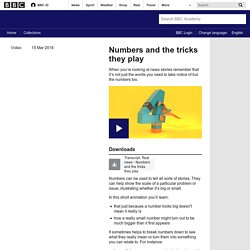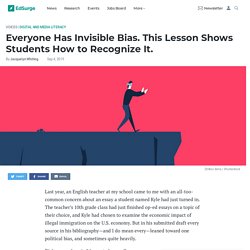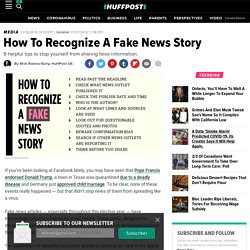

Define Your Project Parameters — Oregon School Library Information System. Deciphering Your Research Assignment video Before you begin your research, be sure you understand your assignment.

Read and re-read your assignment! Ask your teacher any questions you may have. Make sure you know: How much class time will be provided? Check due dates for specific parts of your assignment, such as: OutlineResource list or citationsNotesRough draftFinal draft or project presentation Activity: List tasks and create your schedule with a tool like this interactive timeline. Mike Caulfield's latest web incarnation. Networked Learning, Open Education, and Digital Polarization. Lesson One: Introduction to SIFT. Digital content — finding, evaluating, using and creating it. Finding information is an important component of digital literacy. Finding digital content that is meaningful is about: employing various search strategies to help source quality information using multiple search engines to challenge personal filter bubbles using written, visual, and audio resources to navigate information in a variety of modes collecting a range of information that can then be evaluated to meet your requirements.
Planning Before you begin searching for relevant digital content, consider: SIFT Information Evaluation. Numbers and the tricks they play - BBC Academy. Numbers can be used to tell all sorts of stories.

They can help show the scale of a particular problem or issue, illustrating whether it’s big or small. Fact checking and fake news lesson plans - The ultimate teacher guide. The internet comes with an overload of information.

Though this is a benefit to most teachers and students, internet has a dark side. Photoshop shows you pictures of things that didn’t actually happen, websites have articles with fake content, and amateur journalists invent impressive statistics that are actually a hoax. On the internet, anything may look real, but it isn’t. Is this study legit? 5 questions to ask when reading news stories of medical research. Who doesn’t want to know if drinking that second or third cup of coffee a day will improve your memory, or if sleeping too much increases your risk of a heart attack?

We’re invested in staying healthy and many of us are interested in reading about new research findings to help us make sense of our lifestyle choices. But not all research is equal, and not every research finding should be interpreted in the same way. Nor do all media headlines reflect what was actually studied or found. So how can you tell? Keep these five questions in mind when you’re reading media stories about new studies. 1. Peer review is a process by which a study is checked by experts in the discipline to assess the study’s scientific validity. This process involves the researcher writing up their study methods and results, and sending this to a journal.
If there are major flaws in a study, it’s either rejected for publication, or the researchers are made to address these flaws. Everyone Has Invisible Bias. This Lesson Shows Students How to Recognize It. Last year, an English teacher at my school came to me with an all-too-common concern about an essay a student named Kyle had just turned in.

The teacher’s 10th grade class had just finished op-ed essays on a topic of their choice, and Kyle had chosen to examine the economic impact of illegal immigration on the U.S. economy. But in his submitted draft every source in his bibliography—and I do mean every—leaned toward one political bias, and sometimes quite heavily. “It happened again,” lamented my colleague. Despite directing the class to consult disparate points of view and guiding them to databases and websites constructed to provide point and counterpoint arguments, Kyle hadn’t shown any effort in entertaining other viewpoints. And while Kyle’s essay was the most egregious on this front, he was by no means the only one in this camp.
Students were failing the most central tenet of media literacy, and turning in another set of essays reinforcing bias confirmation. Everyone Has Invisible Bias. This Lesson Shows Students How to Recognize It. How To Recognize A Fake News Story. If you’ve been looking at Facebook lately, you may have seen that Pope Francis endorsed Donald Trump, a town in Texas was quarantined due to a deadly disease and Germany just approved child marriage.

To be clear, none of these events really happened ― but that didn’t stop news of them from spreading like a virus. Fake news articles ― especially throughout this election year ― have increasingly become a fixture on social media. These posts, designed to deceive, run rampant across the internet. Only later, if ever, do readers discover that the stories they shared may have been false. The publication of blatantly inaccurate stories is certainly not new to the digital age, or even the analog era ― just check your local supermarket aisle for tabloids ― but what is new is how easy it is for a reader to scan a headline on Facebook, hit share and watch his 500 followers do the same.
In order to prevent the spread of fake news, here is a quick guide to spotting it. 1. 2. HOW DO YOU KNOW THAT NEWS STORY IS REAL? - MetroFocus. Fake-news-game. HOW DO YOU KNOW THAT NEWS STORY IS REAL? - MetroFocus.